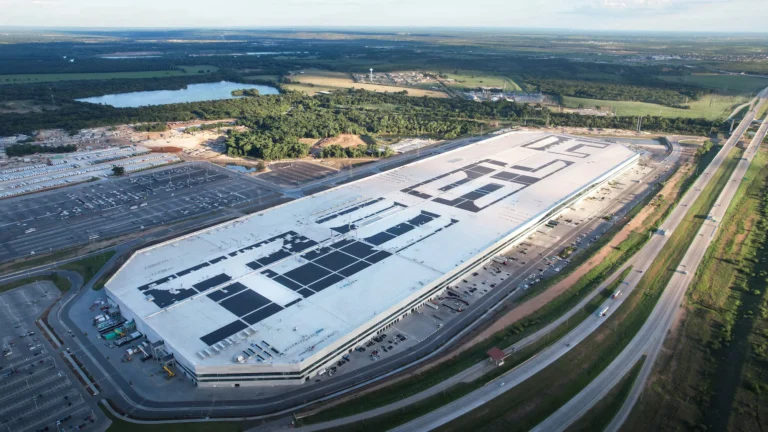For many, Tesla remains synonymous with sleek electric vehicles, autonomous driving, and the charismatic leadership of Elon Musk. However, a deeper look reveals that the company is rapidly evolving beyond its automotive roots, quietly but confidently laying claim to a future where it’s as much an energy infrastructure powerhouse as it is a car manufacturer. This shift is vividly underscored by a colossal new deal in China, signaling a significant turning point for both Tesla and the global energy landscape.
At Geeks Economy, we’re keenly interested in the transformative plays that redefine industries. Tesla’s recent $557 million agreement with China is a prime example, illustrating how the company is moving to electrify not just our commutes, but entire national grids.
Tesla’s Silent Power Play: Beyond the Roadster
While the CyberTruck and Model Y capture headlines, Tesla’s energy division has been steadily, and rapidly, expanding its footprint. Beyond the residential Powerwall and commercial Powerpack, the true game-changer is the Megapack: a utility-scale battery storage system designed to stabilize electrical grids, integrate renewable energy, and prevent power failures on a massive scale.
These aren’t just big batteries; they are sophisticated energy management units, each capable of storing 3.9 MWh of energy. They serve as “smart regulators,” absorbing excess power when supply is high (e.g., abundant solar during midday) and discharging it when demand peaks or renewable sources dip (e.g., after sunset or during cloudy days).
China’s Gigantic Leap: A $557 Million Bet on Stability
The biggest testament to Tesla’s expanding energy ambitions comes from China. The country has committed $557 million (4 billion yuan) to Tesla for the construction of its largest grid-scale energy storage station in Shanghai. This monumental project, set to become operational by 2027, will significantly surpass the current 1 GWh battery park in Shandong, underscoring China’s aggressive push towards a more stable and renewable-powered grid.
This Shanghai station will be directly supplied by Tesla’s Megafactory in Lingang, Shanghai, which began mass production of Megapacks in February 2025. This facility is designed to churn out up to 10,000 Megapack units annually, equivalent to approximately 40 GWh of storage capacity – a staggering figure that highlights the scale of Tesla’s commitment to energy infrastructure.
Why This Matters: Reshaping the Global Energy Landscape
This strategic move carries profound implications for the global energy sector:
- Renewable Energy Integration: The intermittent nature of solar and wind power has long been a challenge for grid stability. Massive battery storage solutions like the Megapack are the missing link, enabling grids to reliably incorporate higher percentages of renewable energy, pushing us closer to decarbonization goals.
- Grid Modernization and Resilience: This investment helps build more resilient and efficient electrical grids. By balancing supply and demand in real-time, these stations can prevent blackouts, reduce transmission losses, and optimize energy flow, future-proofing urban centers.
- Economic Opportunity: Tesla’s energy division is not just growing; it’s becoming a major profit driver for the company, in some aspects even outpacing its automotive counterpart. This deal solidifies Tesla’s position in the lucrative global energy storage market, which is projected for explosive growth. The rising demand for stable power for AI infrastructure also presents a significant opportunity for energy storage.
- Technological Leadership: This partnership signifies China’s recognition of Tesla’s leadership in battery technology and grid-scale energy solutions, even amidst broader geopolitical dynamics. It showcases how innovation transcends borders when it addresses critical global challenges.
The Geeks Economy Perspective
From the vantage point of the Geeks Economy, this development is a powerful reminder that true innovation often transcends traditional industry boundaries. Tesla is no longer just a car company; it’s evolving into a comprehensive energy and infrastructure provider. This shift creates immense opportunities for:
- Software and Hardware Integration: Developing the sophisticated software to manage these complex grids and the hardware to make them efficient and durable.
- Sustainable Infrastructure Development: Investing in projects that are not only technologically advanced but also environmentally responsible and economically viable for the long term.
- Global Collaboration: Demonstrating that even in a complex geopolitical environment, technological solutions to universal problems can drive significant, collaborative investments.
Tesla’s $557 million deal in China is more than a business transaction; it’s a blueprint for the future of energy, where intelligent battery systems play an indispensable role in powering our cities, integrating clean energy, and ensuring a stable and sustainable tomorrow. The road ahead for Tesla, it seems, is paved not just with electric cars, but with gigawatts of stored power.


